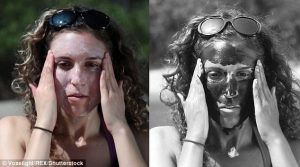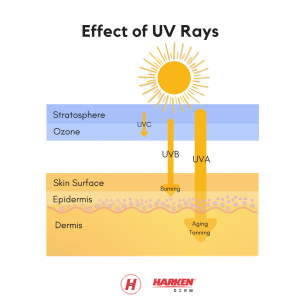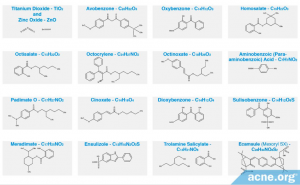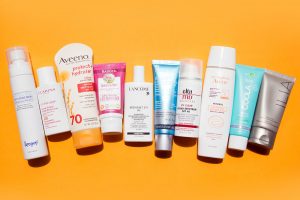
Source: mymodernmet.com
With summer long gone, you may be thinking: “There’s barely any sun! What’s the point?” Research shows that the summer staple may actually be necessary all year round.
UV Radiation
To appreciate sunscreen, we must first understand what exactly it’s protecting us from. The sun emits high-energy ultraviolet (UV) radiation on to the Earth’s surface. UV rays are present even in the rainiest of days: essentially, you are exposed to UV radiation the moment that you step outside your home. Think about how many times you’ve been outside in your lifetime: all that time counts as exposure to UV radiation! Multiple studies have linked long-term UV radiation exposure to an increased risk of melanoma skin cancer.

Source: Harken Derm
There are three types of UV radiation: UVA, UVB, and UVC. Since UVC rays do not reach the Earth’s surface, they are unable to cause direct skin damage.
UVA accounts for 95% of the UV radiation that reaches the Earth’s surface. It can penetrate into the dermis layer of the skin and result to premature skin aging (e.g. fine lines and wrinkles, hyperpigmentation). UVA can also generate free radicals that are known to cause DNA damage, and may increase the risk of melanoma. A study found that these free radicals can also destroy the skin barrier (which includes collagen) thus lead to the loss of skin elasticity.
UVB is responsible for the other 5% of UV radiation: this type of UV mainly affects the epidermis skin layer. UVB increases the skin’s melanin production: it’s what allows you to achieve that sun-kissed glow, or sunburns if you tan for too long. UVB has also been linked to causing direct DNA damage and skin cancer.
How sunscreen works

Source: acne.org (Click to enlarge)
Sunscreen contains inorganic and organic chemicals that work together to block UVA and UVB rays. Titanium dioxide and zinc oxide are the main inorganic compounds formulated into today’s sunscreens. These compounds work mainly by reflecting UV radiation, but some are able to absorb and dissipate the UV rays. Organic compounds, such as avobenzone, contain bonds that can absorb the photons of UV light and release its energy as heat. Some of these compounds may break down as they absorb more UV light; this explains why sunscreen reapplication is encouraged.
Choosing a sunscreen

Source: Into the Gloss
Hopefully, you’ve shopped for sunscreen before and stumbled upon terms like “Broad-spectrum”, “SPF”, and “PA+++”. What exactly do these mean? To put it simply, these terms refer to the level of protection provided by sunscreen. “Broad-spectrum” refers to a sunscreen that blocks both UVA and UVB radiation. Its sun protection factor (SPF) describes its ability to protect from UVB, while its protection grade (PA) indicates its ability to protect from UVA.
The perception of sunscreen only being necessary in the summer needs some changing. In a way, sunscreen allows for a graceful aging process, and more importantly, protect us from skin cancer. The sun and its UV rays are present year round after all, so we should aim to stay protected accordingly.
Written by Ambi Atienza

One response to “Are you wearing sunscreen today?”